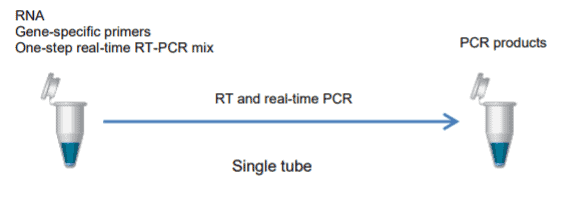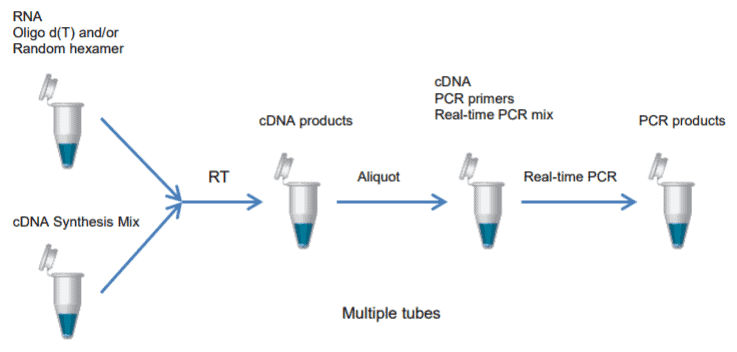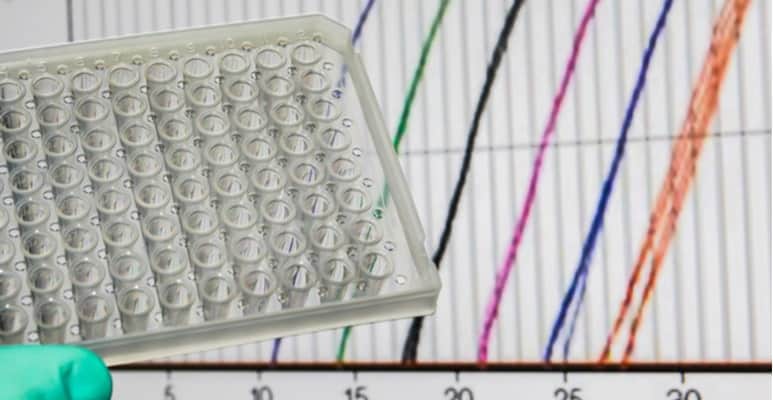One Step versus Two Step real time PCR, which should you use?
The short answer is, there is no short answer, both systems have their advantages and disadvantages.
First of all let’s take a look at how the two techniques work:
One Step real time PCR starts with addition of RNA, gene-specific primers and a one step real-time PCR mix added to one tube. The first reaction which takes place in this tube is reverse transcription of the RNA which the gene-specific primers have bound to, this is immediately followed by real-time PCR cycles to produce PCR products.

Two Step real time PCR requires two separate reactions. In the first step, RNA, primers (Oligo dT or random hexamers) and a cDNA synthesis mix containing reverse transcriptase and dNTPs are mixed and a specific thermal cycle used to reverse transcribe the RNA to first strand cDNA. This cDNA is then added to a second reaction mix containing gene specific primers and real-time PCR mix. The real-time PCR is carried out on a specific cycler such as the BMS Mic.

Pros and Cons of each method
One Step qPCR
| Pros | Cons |
| Accurate representation of target copy number | Often less sensitive |
| Simple and rapid | Difficult to troubleshoot RT step |
| Fewer pipetting steps | No stock of cDNA produced |
| Best option for high throughput screening | |
| Best option when a small number of assays will be run repeatedly | |
| Multiplex gene of interest and control in same well |
Two Step qPCR
| Pros | Cons |
| User can independently optimise both reactions to increase efficiency | Time consuming |
| Highly sensitive | More pipetting steps |
| More efficient | More optimisation required |
| Stock cDNA produced to allow quantification of multiple targets | |
| Ideal when starting material is limited |
Which method should I use for my experiment?
One Step qPCR is useful when analysing a few genes over a large number of samples, Two Step qPCR is useful when analysing a large number of genes over fewer samples.
In general, Two Step qPCR is more sensitive as the reverse transcription and PCR reactions can be optimised individually, also the cDNA produced is more stable than RNA allowing for easier archiving. While One Step qPCR is ideally suited for high throughput screening experiments where less pipetting steps to reduce variation and potential contamination are very important.
Bioline One-Step and Two-Step qPCR reagents available from MSC
MSC supply the Bioline SensiFAST range of reagents for both One-Step and Two-Step qPCR.
| One step qPCR Reagents | Two Step qPCR Reagents |
| Fast qPCR reagents for both SYBR and Probe qPCR chemistry | cDNA synthesis kit with mixed OligodT and random primers for enhanced coverage |
| Optimised buffers for superior sensitivity and specificity | Fast qPCR reagents for both SYBR and Probe qPCR chemistry |
| Results in as little as 40 minutes | Excellent for low abundance targets |
| Minimised primer-dimer effects |
Contact your local MSC sales rep for more information.


